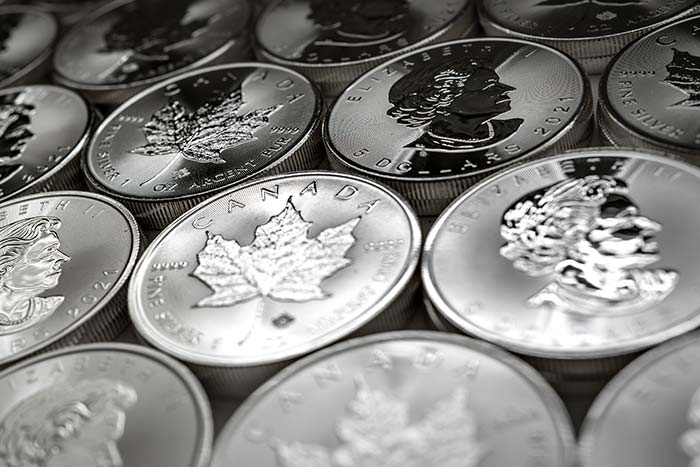Let’s Get Technical
Technicians use various techniques and tools to predict future price movements based on historical data.
Here are some of the most popular types of technical analysis:
1. Chart Patterns
Stock chart patterns often signal transitions between rising and falling trends. Here are the patterns to look at.
- Head and Shoulders: A reversal pattern that signals a change in trend.
- Double Top and Double Bottom (W & M patterns): Patterns that indicate potential reversals after an uptrend or downtrend.
- Triangles (Ascending, Descending, Symmetrical): Continuation patterns that can indicate the direction of the next significant price move.
- Flags and Pennants: Short-term continuation patterns that signal a brief consolidation before the previous trend resumes.
2. Candlestick Patterns
Candlestick patterns are a technical tool that packs data for multiple time frames into single space bars. They build price patterns that may predict price direction once completed.
- Doji: Indicates indecision in the market, which can signal a potential reversal.
- Hammer and Hanging Man: Bullish and bearish reversal patterns, respectively, that occur at the bottom or top of a trend.
- Engulfing Patterns (Bullish and Bearish): Reversal patterns where a small candle is followed by a larger candle that completely engulfs the smaller one.
- Morning Star and Evening Star: Three-candle reversal patterns that signal a potential change in trend direction.
3. Technical Indicators
Technical indicators are pattern-based signals produced by the price, volume and/or open interest of a security contract. They identify trading opportunities by identifying trends from trading activity and historical data.
- Moving Averages (MA): Smooth out price data to identify trends. Common types include Simple Moving Average (SMA) and Exponential Moving Average (EMA).
- Relative Strength Index (RSI): Measures the speed and change of price movements to identify overbought or oversold conditions.
- Moving Average Convergence Divergence (MACD): A trend-following momentum indicator that shows the relationship between two moving averages of a security’s price.
- Bollinger Bands: Consist of a middle band (SMA) and two outer bands (standard deviations away from the SMA) to identify volatility and potential overbought/oversold conditions.
4. Volume Analysis
- Volume Analysis consists of analyzing trading volume to confirm price trends. High volume during an uptrend or downtrend can confirm the strength of the trend.
- On-Balance Volume (OBV) measures buying and selling pressure by adding volume on up days and subtracting volume on down days.
- Volume-Price Trend (VPT) combines price and volume to determine the strength of price trends.
5. Trend Lines and Channels
- Trend Lines are straight lines drawn on a chart to connect significant price points, indicating the direction of the trend.
- Channels are Parallel trend lines that define the upper and lower boundaries of a price range, indicating potential support and resistance levels.
6. Support and Resistance
- Support Levels: Price levels where a downtrend is expected to pause due to a concentration of buying interest.
- Resistance Levels: Price levels where an uptrend is expected to pause due to a concentration of selling interest.
7. Fibonacci Retracement
- Fibonacci Retracement is based on the idea that markets will retrace a predictable portion of a move, often identified by key Fibonacci levels (23.6%, 38.2%, 50%, 61.8%, and 100%).
8. Elliott Wave Theory
- Elliot Wave Theory proposes that market prices move in predictable waves (five waves in the direction of the trend followed by three corrective waves) and can be used to forecast future price movements.
9. Ichimoku Cloud
- Ichimoku Cloud is a comprehensive indicator that defines support and resistance, identifies trend direction, gauges momentum, and provides trading signals.
10. Relative Strength
- Relative Strength compares the performance of a security to a benchmark or other securities to identify strong or weak performers.
![]()
YOUR ACTION PLAN
In The War Room, we use all types of analysis to make trading and investing recommendations. Whether you’re a fan of fundamental analysis or technical analysis – you’ll find your own unique trading style here. Bryan and I have been on fire in the month of June, closing 32 winning trades for an 82% win rate, and we each use different strategies for our trades.
Click here to join Bryan and I today in The War Room.
FUN FACT FRIDAY
How elections affect the stock market: According to USBank.com, two scenarios corresponded to positive absolute returns in excess of long-term average returns.The first of those scenarios is Democratic control of the White House and full Republican control of Congress. The second scenario is Democratic control of the White House and split party control of the Senate and House.
More from Trade of the Day
How Long Can This Silver Run Last?
Jan 15, 2026
Inside the Amazon Decision That Lost Millions
Jan 14, 2026
Fed Investigation Creates Trading Gold Rush
Jan 12, 2026

























